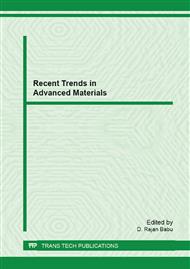[1]
Hesse A. Reliable data from diverse regions of the world exist to show that there has been a steady increase in the prevalence of urolithiasis. World J Urol. 2005; 23(5):302–303. PubMed PMID: 16320059.
Google Scholar
[2]
Rizvi SA, Naqvi SA, Hussain Z, Hashmi A, Hussain M, Zafar MN, Sultan S, Mehdi H. Pediatric urolithiasis: developing nation perspectives. J Urol. 2002; 168(4):1522-1525. PubMed PMID: 12352448.
DOI: 10.1016/s0022-5347(05)64509-0
Google Scholar
[3]
David N. Churchill et al. Urolithiasis - A study of drinking water hardness and genetic factors. J Chronic Diseases. 1980; 33(11-12): 727-731.
DOI: 10.1016/0021-9681(80)90060-0
Google Scholar
[4]
Trinchieri A. Epidemiology of urolithiasis. Arch Ital Urol Androl. 1996; 68(4):203-249. Review. PubMed PMID: 8936716.
Google Scholar
[5]
Sharma AP, Filler G. Epidemiology of pediatric urolithiasis. Indian J. Urol. 2010; 26:516-522. PubMed PMID: 21369384.
Google Scholar
[6]
Bellizzi V et al. Effects of water hardness on urinary risk factors for kidney stones in patients with idiopathic nephrolithiasis. Nephron. 1999;81 Suppl. 1:66-70. PubMed PMID: 9873217.
DOI: 10.1159/000046301
Google Scholar
[7]
Sandhya Abbagani et al. Kidney stone disease: etiology and evaluation. Int J Applied Bio. and Pharma. Tech. 2010; 1(1):175-182.
Google Scholar
[8]
Ramello A, Vitale C, Marangella M. Epidemiology of nephrolithiasis. J Nephrol. 2000; 13 Suppl 3:S45-50. Review. PubMed PMID: 11132032.
Google Scholar
[9]
Pragnya A Bhatt, Parimal Paul. Analysis of urinary stone constituents using powder X-ray diffraction and FT–IR. J Chem Sci 2008; 120:267–273.
DOI: 10.1007/s12039-008-0032-1
Google Scholar
[10]
Shah AM, Kalmunkar S, Punekar SV, Billimoria FR, Bapat SD, Deshmukh SS. Spectrum of pediatric urolithiasis in western India. Indian J Pediatr. 1991; 58(4):543-549. PubMed PMID: 1800338.
DOI: 10.1007/bf02750939
Google Scholar
[11]
Hess B. Pathophysiology, diagnosis and conservative therapy in calcium kidney calculi. Ther Umsch. 2003; 60(2):79-87. German. PubMed PMID: 12649986.
Google Scholar
[12]
Kozisek F. Health significance of drinking water calcium and magnesium, February 2003; Czech. http://www.szu.cz/chzp/voda/pdf/hardness.pdf
Google Scholar
[13]
Optimal calcium intake. NIH Consens Statement. 1994; 12(4):1-31. Review. PubMed PMID: 7599655.
Google Scholar
[14]
Bradley F Schwartz et al. Calcium nephrolithiasis: effect of water hardness on urinary electrolytes. Urology 2002; 60(1):23-27. Elsevier, New York, NY.
DOI: 10.1016/s0090-4295(02)01631-x
Google Scholar
[15]
glycosaminoglycan hyaluronan. J Am Soc Nephrol. 2006; 17(6):1673-1687. PubMed PMID: 16707562.
Google Scholar
[16]
Randall A. The origin and growth of renal calculi. Ann Surg. 1937; 105(6):1009–1027. PubMed PMID: 17856988.
Google Scholar
[17]
Howard JE, Thomas WC Jr. Control of crystallization in urine. Am J Med. 1968; 45(5):693-699. PubMed PMID: 5687258.
Google Scholar
[18]
Ackermann D, Baumann JM, Futterlieb A, Zingg EJ. Influence of calcium content in mineral water on chemistry and crystallization conditions in urine of calcium stone formers. Eur Urol. 1988; 14(4):305-308. PubMed PMID: 3169073.
DOI: 10.1159/000472966
Google Scholar
[19]
Shuster J, Finlayson B, Scheaffer R, Sierakowski R, Zoltek J, Dzegede S. Water hardness and urinary stone disease. J Urol. 1982; 128(2):422-425. PubMed PMID: 7109123.
DOI: 10.1016/s0022-5347(17)52951-1
Google Scholar
[20]
Churchill D, Bryant D, Fodor G, Gault MH. Drinking water hardness and urolithiasis. Ann Intern Med. 1978; 88(4):513-4. PubMed PMID: 637432.
DOI: 10.7326/0003-4819-88-4-513
Google Scholar
[21]
Ackermann D, Baumann JM, Futterlieb A, Zingg EJ. Influence of calcium content in mineral water on chemistry and crystallization conditions in urine of calcium stone formers. Eur Urol. 1988; 14(4):305-8. PubMed PMID: 3169073.
DOI: 10.1159/000472966
Google Scholar
[22]
Sierkowski R, Finlayson B, Landes R. Stone incidence as related to water hardness in different geographical regions of the United States. Urol. Research. 1979; 7(3):157-160.
DOI: 10.1007/bf00257200
Google Scholar
[23]
Schwartz BF, Schenkman NS, Bruce JE, Leslie SW, Stoller ML. Calcium nephrolithiasis: effect of water hardness on urinary electrolytes. Urology 2002; 60:23-7.
DOI: 10.1016/s0090-4295(02)01631-x
Google Scholar


